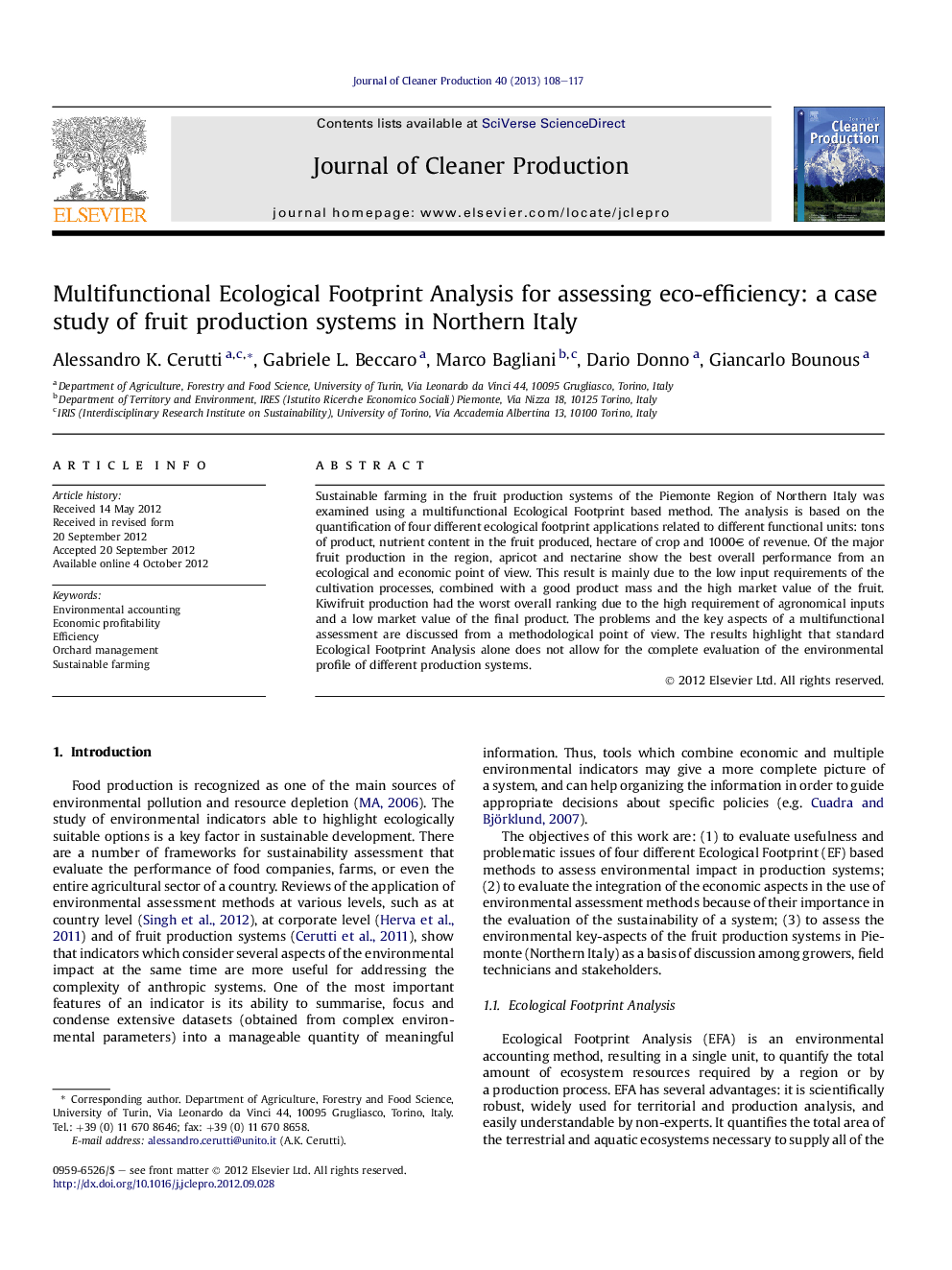| کد مقاله | کد نشریه | سال انتشار | مقاله انگلیسی | نسخه تمام متن |
|---|---|---|---|---|
| 1745592 | 1522206 | 2013 | 10 صفحه PDF | دانلود رایگان |

Sustainable farming in the fruit production systems of the Piemonte Region of Northern Italy was examined using a multifunctional Ecological Footprint based method. The analysis is based on the quantification of four different ecological footprint applications related to different functional units: tons of product, nutrient content in the fruit produced, hectare of crop and 1000€ of revenue. Of the major fruit production in the region, apricot and nectarine show the best overall performance from an ecological and economic point of view. This result is mainly due to the low input requirements of the cultivation processes, combined with a good product mass and the high market value of the fruit. Kiwifruit production had the worst overall ranking due to the high requirement of agronomical inputs and a low market value of the final product. The problems and the key aspects of a multifunctional assessment are discussed from a methodological point of view. The results highlight that standard Ecological Footprint Analysis alone does not allow for the complete evaluation of the environmental profile of different production systems.
► No single method is adequate to perform a complete environmental assessment of a production system.
► EFA results of the same production system vary significantly using different functional units.
► A matrix of results from different EFA methods is useful to obtain comprehensive results, balancing bias and limitations.
Journal: Journal of Cleaner Production - Volume 40, February 2013, Pages 108–117